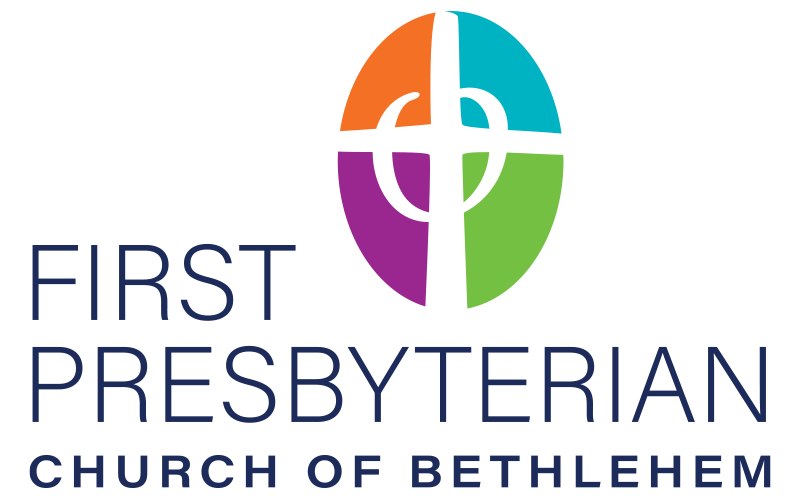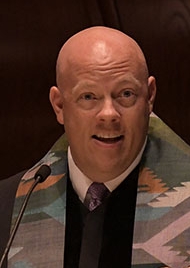By The Rev. J.C. Austin
I remember one of the members of my previous congregation, Madison Avenue Presbyterian Church in New York City, telling the story of standing outside the entrance to that church’s sanctuary on Madison Avenue one day as the evening was approaching. She was on her way to a church meeting but had stopped outside to finish a work call on her cellphone.
As she stood there half-listening to people on her conference call drone on, she noticed two pedestrians walking by when one stopped for a moment and looked up at the sanctuary entrance. The other looked back at him impatiently, wondering why he had stopped, and the first one said, by way of explanation: “I wonder what that building is now that it’s not a church?” Then they both hurried on up Madison Avenue, leaving the church member to look up at the sanctuary herself in puzzlement.
The problem, of course, was that the buildings were still very much in use as a church! But the church member looked at the entrance with new attentiveness and realized that it did, in fact, look run down, even closed up. Huge wooden doors into the Sanctuary were locked tightly shut at the top of a steep, weather-beaten stone staircase, their tiny windows almost black with accumulated grime from the busy city street; no lights were visible.
The church member went into her committee meeting, told the other people there what had happened, and that began a conversation that ultimately resulted in a major capital campaign that allowed the church to do a complete gut renovation of the Sanctuary.
And that was all just for the Sanctuary; about seven years later they did another campaign to renovate the rest of the buildings, which looked better but were actually in worse shape. In some cases the original 1916 plumbing and electrical wiring were still there, wheezing at the demands of 21st century offices and events like someone running a marathon after no more training than going from the couch to the kitchen and back with a new sleeve of Oreos for several decades.
Replacing plumbing and wiring systems and putting in new sprinklers was not nearly as satisfying as renovating the Sanctuary, but it was, in many ways, far more important and necessary. In fact, our architects told us that something catastrophic in terms of fire or flooding could happen any day. But you couldn’t see the difference that all that work and all that money would make in the same way you could in the Sanctuary.
Except for the pool. That’s right: the pool. Have you ever heard of a church having its own swimming pool? Gyms, sure; gyms are a dime a dozen in churches. But swimming pools? I have since come across a few other examples, but they are rare, and I had certainly never heard of such a thing before I was called to serve there.
Madison Avenue basically has two buildings, you see: the Sanctuary and what they call the Church House, which is all the space for offices and programs. Because it’s in Manhattan, the Church House goes up, not out; it’s a twelve-story building that was built very intentionally on the model of urban YMCAs, with two gymnasiums and locker rooms, dorm space for people who functioned as a sort of combination of social workers and program directors, a bowling alley and game room, and yes, a swimming pool.
The senior pastor at the time had been very involved in the YMCA when it was an overtly Christian movement dedicated to improving physical, mental, social, and spiritual well-being with a particular concern for those in poor communities who did not have the resources to do that themselves, especially the physical and social dimensions.
The pastor felt that the Church as a whole and Madison Avenue Church in particular should have a similar holistic focus on the well-being of its neighbors, and in particular the burgeoning immigrant communities just a few blocks to the east of the church, literally on the other side of the train tracks that ran under the recently created Park Avenue down to Grand Central Station. And he wanted the new Church House to reflect that commitment.
Unlike churches, swimming pools are a central feature of YMCA buildings, which have them to promote physical health, friendly competition, recreation, and personal safety (it is dangerous not to know how to swim, and that problem remains common among urban children). That’s why Madison Avenue had a pool, and it was used to great effect for decades to accomplish exactly that mission shared by the YMCAs.
However, by the time we were talking about the building renovations in the mid-to-late 2000s, the pool had not been used that way for decades. The pool hadn’t even been used for several decades. The problem was that the poor immigrant and servant communities that Madison Avenue served just a few blocks to its east were systematically displaced by what we would now call gentrification starting after World War II, with wealthier people coming in and displacing the tenants of those buildings to other parts of the city that they could still afford.
So the pool went from a major tool for outreach and service to neighbors in need, to a recreational space for the largely wealthy families who belonged to the congregation itself. After a few decades, even they stopped using it, as larger and fancier private pools were built in the neighborhood. With very few people using it and the costs of maintaining it, insuring it, and staffing it with lifeguards rising dramatically, they finally decided to close it down and drained it.
And it stayed that way for a couple of decades until the renovation plan was being developed. And that’s when the debate began. You see, there was a group of leaders who wanted to restore and reopen the pool as part of the renovations. They talked about how their family had all learned to swim there, sometimes through multiple generations, and how they had built important relationships with others in the process.
They talked about how it could help attract people to the church again, as it had before. They talked about how it was part of the identity of the congregation since the building was built. On the other side, people said that it would be too expensive to restore it and we should just turn it into a storage room (which is what it already had become).
After a while of this debate going back and forth, something unexpected happened: an Elder emailed me this very passage from First Corinthians. She had been one of the advocates for preserving and restoring the pool, telling the story repeatedly about how her children learned to swim there and how much they enjoyed coming to the church because of that.
“This was in my devotional reading the other day,” she said, “and I can’t get it out of my head, even though I’ve been trying, because I don’t like where it’s leading me. ‘You are God’s building,’ it says. We talk a lot about the buildings being ‘God’s house’, but this says that the congregation is God’s building, not the Church House. That means all of this we’re doing is not about preserving a building; it’s not even about having a building; it’s about being a building, God’s building.
“And what God tells us about how to be is to love our neighbors as ourselves, and so our actual building has to help us do that. But the truth is, a swimming pool won’t help us do that anymore. I don’t know what will, but this says that God’s Spirit dwells in us as God’s temple, God’s building. It says that the present and future belongs to us, and we belong to Christ, and Christ belongs to God. So if that’s the case, then we need to listen to God’s Spirit in us, and it will tell us how we can use this space to love our neighbors in the present and the future.”
And she was right. Soon after, in the midst of the familiar back-and-forth of the debate over the pool in a meeting, she asked an important question: why had we built a pool in the first place? That led us to remember the story about the YMCA parallel, and people were taken by the fact that the pool was originally to serve people in the neighborhood, especially people who were poor, not for the congregation’s internal use.
Finally someone asked, “Well, who’s in our neighborhood now that we need to serve? Can we use it for that?” The answer came pretty quickly after that: the population of people who were homeless in the neighborhood was significantly increasing because the city had been cutting back its funding for shelters, which had become so overcrowded and dangerous that many people preferred to risk sleeping on the streets.
And that started a conversation that ended with a series of unanimous votes to tear out the swimming pool and replace it with a gracious, purpose-built, 7-nights-a-week shelter for people experiencing homelessness, run by volunteers from the church. It became one of the defining ministries of outreach for the congregation, serving their neighbors just as the pool had originally been created to do, except this time in coordination with other faith communities doing similar service through an organization literally called the Neighborhood Coalition for Shelter.
There are certain kinds of buildings that always reflect their original identity and purpose. And that’s true of the Church as God’s building above all. I don’t mean the facilities; I mean the congregation of people called together in a particular place and built up on the foundation of Jesus Christ to be God’s building, a dwelling place for the Spirit of God and a presence of loving service to its neighbors as a sign of God’s love for them and the whole world.
The congregation’s facilities are then an important and powerful resource to help the congregation be God’s building. But it is the congregation, in its life and ministry and character and care for its neighbors, that is God’s building; that is what we have been built up to do and to be.
Some of that work is done by inviting our neighbors into the facilities, both to serve them and to work with them to serve others. And some of that work is done by going from our facilities out to where our neighbors are. But in either case, it is we who together are God’s building as we work with and for our neighbors wherever they are.
So, as we continue to explore what it means to be a “Neighborhood Church,” let us rededicate ourselves to being God’s building here in Bethlehem, knowing that buildings can and should transform to serve and partner with neighbors in new ways, even as they not only retain what they were always meant to be, but do so ever more faithfully and effectively as they do.
Let us use the resources we have, including our facilities, so that people will look and say, “Wow, I wonder what this community would be like if that church wasn’t here.” And let us live into Paul’s promise that all things, including the present and the future, belong to us as we belong to Christ and Christ belongs to God, and trust that will be more than enough of a foundation to build on and be built on as long as time lasts.

